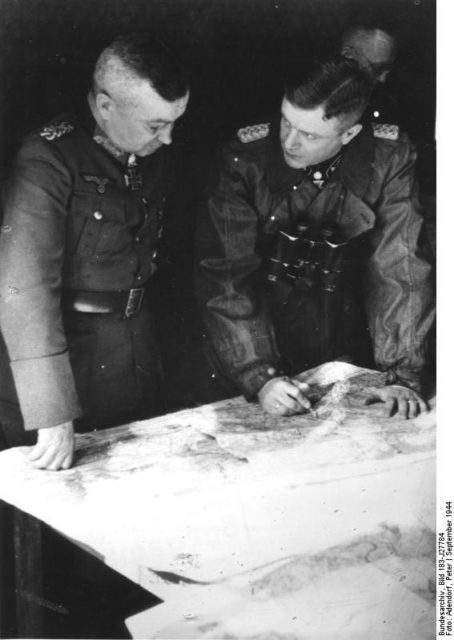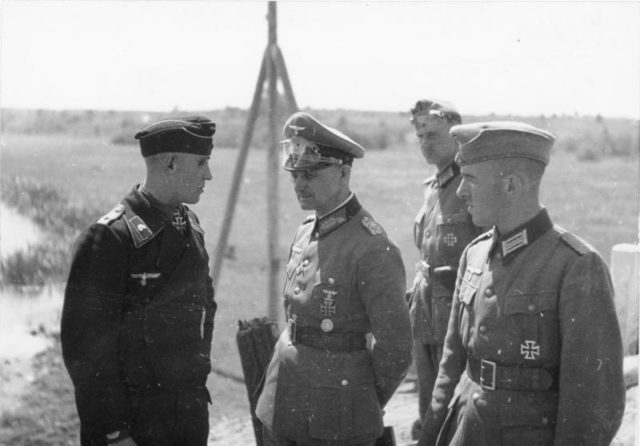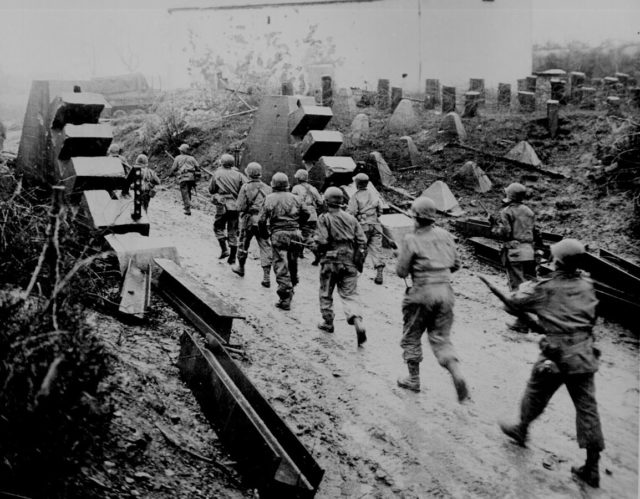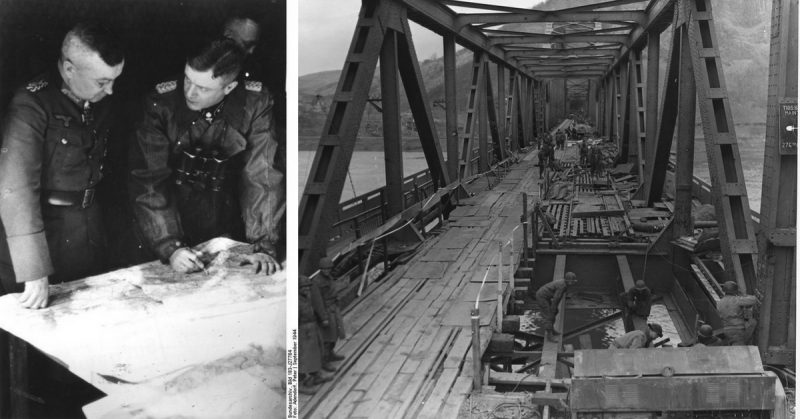In the fall of 1943, following the failure of an offensive in Russia, Hitler complained to his commanders about the quality of their troops. What had happened to the fighting spirit of 1941, the Fuehrer demanded. What had happened to the soldiers who had once shown such courage?
Incensed at the insult to the character of his soldiers, one of the commanders responded. “The men of 1941 are dead,” he said. “Their graves lie strewn across the whole of Russia.”
That general, who dared to both defend and mourn his men in the face of Hitler’s fury, was Walter Model.
Early Career
Born in 1891 to a family of Prussian Protestants, Walter Model did not fit the classic picture of a Prussian officer. His family did not have a strong tradition of military service. He was not naturally physically fit and had to undertake a strict regime of self-discipline to make it through his army training.
During WWI, Model alternated periods of front line command and staff service. He was wounded twice, once almost fatally. By the end of the war, he had served as second-in-command of a battalion.
Between the Wars
After the war, Model continued to advance through the ranks while alternating staff and command posts.
In theory, Germany was not allowed to have a general staff under the terms of the peace agreement. In practice, they had a general staff hidden under another name. As part of that group, Model proved himself as a theoretician. He lectured on military history and theory and founded a youth organization to give young men discipline and training.
Through training exercises in Russia and visits to the Spanish Civil War, Model gained first-hand experience of developments in a modern war.

The Early War
At the start of WWII Model was a major general and served in command groups during the German invasions of Poland in 1939 and France in 1940.
He was then given command of the 3rd Panzer Division, an undermanned and underequipped force. He showed great attention to detail, making sure to meet as many of his men as possible and putting them through rigorous training.
The Shock of Russia
3rd Panzer was sent east to take part in Operation Barbarossa, the German invasion of Russia in 1941. Early in the invasion, Model proved himself through a brilliant attack that seized the Kodern Bridge intact.
Russia was a huge to shock to the general. Frequently visiting his men on the front lines, he saw their struggles with the cold and damp, and the exhaustion that came from fighting the vast and determined Red Army.
On one occasion, Model found all the men from one of his frontline units in a state of complete debilitation. He had them removed to rest, but there could be no real respite. His forces were being pushed too hard.

Independent Operator
Following another great victory at Rzhev in 1942, Model came into conflict with Hitler. Challenging the Fuehrer over his orders, Model asked who was really in command of the 9th Army, which he now led – Model or Hitler. Hitler let him have his way.
Model was a strict leader who pushed himself and his officers hard. Those who failed in their objectives were sacked. He was severely wounded while overseeing operations against Russian partisans.
When the Germans launched Operation Citadel, their last great push against the Russians, Model had grave doubts. They proved to be well founded. As the operation fell apart, he worked hard to save as many of his men as he could.
Field Marshal
In March 1944, Model was made a field marshal. Initially given command of one army group on the Russian front, he was soon put in charge of a second.
Seeing the depleted state of Army Group Centre, Model focused on rebuilding morale and maintaining supply routes. His work turned around the situation enabling the collapsing army to regain its fitness and resume the fight. However, Hitler would not let him do what was really needed – strategic withdrawals to keep the military in one piece.
The Western Front
In August, Hitler made Model supreme commander of the German forces fighting the Allies in France. He protested, wanting to continue his work in the east, but Hitler would not back down.
Again, Model worked to restore morale while fighting a fierce battle against superior forces. His strict approach to his officers led many to resign their posts.
He knitted together the pieces of the fractured German forces, correctly anticipating and countering the Allied attempt to take Arnhem. However, he did not have enough men and resources and led his troops from crisis to crisis as they were driven back.

The Bulge
When Hitler began making plans for a counterattack, Model immediately disagreed with him. He believed the scheme was too grand and only a smaller offensive could succeed. If that was not possible, then the armored element of a massive assault should all be focused in one place. Hitler would not be moved.
Model did his best during the Battle of the Bulge, redirecting efforts from 6th Panzer Army to 5th Panzer Army when the 6th became exhausted. However, as Model had predicted, the offensive failed.
Impossible Challenges
Model now faced the impossible challenge of preventing the Allied advance into Germany. His hands were tied by orders from Hitler that he did not agree with. When Kesselring was given command of the situation, Model retained command of an army group.
As the Reich dissolved, Model refused to obey Hitler’s scorched earth policy of destroying industry along the Ruhr.
By April, Model’s army was battered and surrounded. He dissolved his units, demobilizing the oldest and youngest men.
Model’s sense of honor would not allow him to surrender. On April 21, 1945, he shot himself beneath a huge oak tree. He was buried where he fell and remained there for ten years, before being reburied in a military cemetery.
Source:
James Lucas (1996), Hitler’s Enforcers: Leaders of the German War Machine 1939-1945
